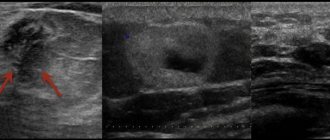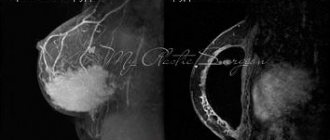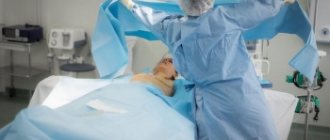Recovery after mammoplasty requires time and work on yourself to achieve and maintain a good aesthetic result. The recovery period after surgery depends on the type and extent of surgery, the individual characteristics of the body, and compliance with the recommendations of the plastic surgeon. On average, rehabilitation after breast augmentation, lifting, and reduction mammoplasty takes 6 months. During this period, a new breast is formed, the scars gradually heal, and the doctor removes restrictions, after which you can return to a full and normal life.
In Russia, mammoplasty is one of the three most popular plastic surgeries. Today, in terms of experience and development of minimally invasive techniques, our plastic surgeons are not inferior to foreign ones. Postoperative scars are almost invisible, and with the help of modern methods of endoprosthetics, you can achieve such natural and feminine breast shapes that even a professional will not suspect the presence of silicone implants. We talked with the head of the plastic surgery department, Oleg Leonidovich Nesteruk, to find out how recovery after mammoplasty goes day by day and how long it takes.
Early recovery period
For the first 1-2 days after mammoplasty, the patient is in the hospital under the supervision of a plastic surgeon, nurses, and the doctor on duty. Bed rest is indicated for 24 hours. In our wards for 1-2 people, equipped according to the model of the best European clinics, all conditions have been created for a comfortable recovery. A stay in a hospital involves the care of medical personnel. The very next day after the first follow-up examination by the doctor, the patient is discharged from the clinic to go home. If desired, the hospital stay can be extended.
To avoid infectious complications and speed up the body’s recovery, the doctor prescribes a course of drug therapy and solutions for treating sutures at home. The way your breasts will look after mammoplasty depends on following these recommendations. You should not experiment and take independent measures to speed up recovery for recovery after mammoplasty - the recommendations of the doctor under whose supervision the recovery is taking place are sufficient. Perhaps the most important of them is to wear compression garments (bra) for 2 months to avoid displacement of the implants and fix the position of the breasts.
For the first 3-5 days, the patient may experience pain and discomfort after surgery. However, they can be successfully relieved with painkillers.
On days 10-12 after mammoplasty, the plastic surgeon removes the sutures. It is too early to evaluate the result, since during this time, most likely, swelling and hematomas will not go away. You don't need to do anything to eliminate them. For the first two weeks, it is contraindicated to lift weights, engage in active sports, or take a hot bath or shower.
After 1-2 months, the early recovery period ends, the implants take root, and the breasts take on a beautiful shape. The patient gradually returns to her usual lifestyle.
Why does pain occur after mammoplasty?
When a woman experiences discomfort due to imperfect breast shape, size or asymmetry, she turns to surgeons with the question of the possibility of mammoplasty.
During augmentation mammoplasty, implants are installed that are foreign to the woman’s body. It takes time for them to engraft into soft tissues, for the woman’s body to adapt to changes. Therefore, in the postoperative period, you should be patient and follow all the doctor’s instructions regarding not only taking medications, but also your physical activity regimen, as well as self-care.
Pain after breast surgery is associated with tissue trauma during surgery and their stretching due to the installation of implants. The severity of pain depends on the surgical approach, the volume and technique of the operation, and the sensitivity of the patient. The placement of the implant also affects the intensity of pain: if it is installed under the mammary gland, the pain will be less pronounced than in cases of installation under the pectoral muscle.
In the first weeks after surgery, discomfort will also be associated with breast swelling. Sometimes swelling spreads to the abdominal area, which is considered normal during this period. There may be hematomas that resolve fairly quickly.
Back pain may appear, which usually disappears on average within 2 weeks after plastic surgery.
When can restoration be considered complete?
If the rehabilitation goes well, then after 6 months the traces of the operation are almost invisible. A plastic surgeon may allow beach holidays, visits to baths and saunas. But it is better to postpone tanning after mammoplasty for 1 year, since there is a risk that the scars will darken. During this time, your breasts require special care. It is necessary to remember about regular examination by a mammologist once every six months. Practice shows that complications after mammoplasty, if they appear, occur within the first 6 months. At the end of this period, we can say that the operation was indeed successful and the recovery is complete.
How long will you have to endure?
In the first week after surgery, the pain is most intense. Each patient is different, but usually the pain decreases and gradually disappears within 2 weeks after surgery.
If the feeling of pain does not go away or, on the contrary, its intensity increases, you should inform the attending physician, talk about your feelings, and, if necessary, come for an examination. Pain accompanies the healing process, but can be an important signal of the onset of the inflammatory process.
An important point that requires special attention is proper hygiene of the suture area after surgery. Failure to follow the rules for caring for sutures can cause discomfort, a burning sensation, nagging pain, and cause complications.
Unpleasant sensations during active movements may accompany you for several months after surgery.
The entire process of rehabilitation after mammoplasty with a return to a full, normal lifestyle usually takes about 1 year.
What is the secret to a comfortable recovery after mammoplasty in our clinic?
Department of Plastic Surgery at the Clinic named after. N.I. Pirogov was opened in 1999. Today in St. Petersburg it is considered the flagship. Our plastic surgeons have successfully performed more than 10 thousand operations, and each work can truly be called “jewelry.” The combination of high quality medical services and affordable prices is one of our main advantages and confirmation of our commitment to the principle of customer focus. We offer our patients:
- services of the best plastic surgeons in the city with impressive experience in the field of aesthetic and reconstructive medicine;
- material and technical equipment of the clinic at the level of leading European medical institutions;
- a wide range of medical specialists whose assistance may be required to perform breast surgery;
- high-comfort rooms for 1 or 2 people;
- availability of its own laboratory and intensive care unit;
- discounts and all inclusive package offers at reduced prices for plastic surgery;
- personal support from a curator for patients from other cities and countries;
- interest-free installments.
If you have any questions, call us at: +7 (812) 320-70-00. Contact center specialists will advise you and help you make an appointment with a plastic surgeon.
Reasons for development
Despite the seriousness of the situation, there is no need to be afraid of complications after implantation - breast contracture after mammoplasty occurs very rarely - it is diagnosed in only 1-2% of patients. If detected in a timely manner, it can be easily eliminated without any consequences.
Possible reasons for the development of pathology:
- errors during surgery - with careful selection of a surgeon and a medical clinic with extensive experience, these risks are greatly minimized;
- incorrectly chosen implantation technique;
- damage to the milk ducts of the breast during the installation of endoprostheses;
- reaction of the body caused by its individual characteristics;
- postoperative hematomas;
- inflammatory processes that occurred during the rehabilitation period;
- increased tendency of the body to form scar tissue;
- accumulation of serous fluid around the endoprosthesis;
- discrepancy between the size of the implant and the prepared bed;
- trauma to the mammary glands after implant installation;
- excessive physical exertion on the chest muscles;
- hormonal imbalance in the patient;
- disturbances in the functioning of the immune system;
- penetration of silicone through the shell is completely excluded in high-quality implants.
Most of the reasons that can cause the development of pathology belong to the field of medical errors. But if you choose the right clinic and experienced specialist, the likelihood of negative consequences can be minimized. The implants themselves are also important – their shape, material, surface, size and manufacturer.
Modern brands, such as Motiva, produce endoprostheses that are maximally adapted to the anatomical characteristics of patients, made from safe biocompatible materials and with minimal risk of rejection. The contents of the implants remain in place even if the shell ruptures and does not provoke thickening of fibrous tissue.
Additional factors are active smoking, alcohol consumption and intoxication of the body, violation of the rules of conduct during rehabilitation.
As a rule, one reason for the development of pathology is not enough. And to reduce risks, it is important to carefully follow all the surgeon’s recommendations.
Blog: Breast Cancer
“WE LIVE” AWARD FOR CONTRIBUTION TO THE FIGHT AGAINST CANCER:
!!VOTE FOR DR. SKVORTSOV >link> In this section, I want to briefly introduce you to the rules of everyday life after a mastectomy for breast cancer and further rehabilitation. So, all your life you seem to have followed all the doctors’ recommendations, undergone a medical examination, and yet this happened to you - you were diagnosed with and confirmed to have breast cancer. You went through all the examinations, and also repeatedly consulted with oncologists about the tactics of further treatment, as a result, there is a little “mess” in your head, but still you settled on a certain doctor (and according to the legislation of the Russian Federation you have to choose your own doctor) and now you are scheduled for an operation with a doctor in the clinic. The process of hospitalization is, in principle, the same in all hospitals. Usually a week in advance or the day before, a representative of the clinic calls you and tells you what you need to have with you on the day of hospitalization and throughout the entire period of treatment. You don’t need to think about any problems during hospitalization; most often everything goes smoothly; even if you forgot to take something with you, you can purchase it on site at the hospital. You are scheduled for an operation and the process of preparing for the operation ends with a conversation with the anesthesiologist. Next begins close communication with the attending surgeon. An operation was performed - removal of the breast with lymph nodes, or it is also called a radical mastectomy. Radical means that the entire cancerous tumor has been removed and there are virtually no cancer cells left. A cancerous tumor, being in the mammary gland, is capable of transmitting its traces (metastases) through the lymphatic pathways to the lymph nodes of the axillary region of the affected mammary gland. The scope of the operation consists of removing the breast itself while simultaneously removing all lymph nodes in the axillary area. The axillary region is represented by fatty tissue, among which there are lymph nodes. Some people have more, and some have less, it’s very individual. The axillary region contains vital structures such as neurovascular bundles and multiple small nerve endings. When removing tissue from lymph nodes, the surgeon carefully bypasses these structures, but still has to touch them a little in order to remove all the lymph nodes, which subsequently causes discomfort and pain in the arm and this is an injury, which can be followed by a chain of complications that arise not according to the fault of the patient and the surgeon, but due to the anatomical characteristics of each person. The fact is that after removal of the lymph nodes, the outflow of lymph from the side where the mammary gland was is disrupted. The hand on the affected side suffers more, most often the lymphatic drainage is completely disrupted, especially in the early period, so it is very important to follow the treatment regimen (behave correctly) so that there is no further lymphedema (swelling of the hand) and does not lead to subsequent dangerous complications. It is important for you to recover properly (undergo rehabilitation). We can distinguish early and late periods of rehabilitation after a mastectomy (breast removal) for breast cancer. Early period of rehabilitation after mastectomy This is the recovery period from the moment the operation itself is performed until the patient is discharged home under the supervision of an oncologist. The woman is transferred from the operating room to the observation ward. Typically, a drain is installed in the axillary area to control bleeding on the first day, and subsequently to evacuate lymph from this area. It is important to observe the ward regime on the first day, and I recommend staying in bed for the first 4-6 hours, since women most often overestimate their capabilities, get up and orthostatic collapse occurs (lowering blood pressure) as a result of which they fall to the floor, and as a result may drainage breaks out and traumatization of important neurovascular structures in this area occurs, or bleeding in the wound area occurs, which can lead to repeated emergency surgery. So, the first day after the mastectomy has passed, the next day the dressing is performed and a conversation with the attending physician about the progress of the operation and its features. Complaints appear, all of them are considered normal after such an operation. These include moderate pain in the area of the postoperative wound, loss of sensation up to the elbow on the affected side, and sometimes shooting in the arm. Dressings are carried out daily, each clinic has its own rules and duration. It is very important to begin recovery with physical education and a set of exercises that will contribute to the movement of the hand and subsequently to satisfactory functional functioning of the hand. Our center has a special rehabilitation and recovery department. Every day, a doctor or nurse from this department comes to the wards and conducts classes and talks about dosing loads on the arm. I repeat that this is all aimed at restoring normal function of the arm after a mastectomy. Your attending physician is the main figure in your recovery after surgery and you need to listen to what he tells you; if you do not fully understand something, it is better to ask again. At the time of discharge, the doctor will give you recommendations for further treatment. They are different for everyone: chemotherapy, hormone therapy and radiation therapy. At this stage, the psycho-emotional status of a woman is very important, she goes out into ordinary life, but without a mammary gland, only the patient himself knows what is in his head, here it is important to help the woman, tell her and prove that nothing has changed and everything is temporary, but restoration of the gland itself is a temporary procedure and, if the patient wishes to restore it, she can contact me to perform reconstruction of the gland. In our center, a conversation with a psychologist is presented, who undoubtedly provides verbal assistance. What kind of underwear should I buy? How to live further? I want to say categorically!!! Don't listen to anyone!!! For now, buy yourself a temporary external prosthesis that you feel comfortable and like, it will be temporary, if you do not restore your breasts, then perhaps it will become permanent. Lingerie-bra theme. Buy any to your taste. It doesn't matter what he is. With or without seeds. There are no restrictions. Typically, all these restrictions come from advertising manufacturers in order to force the purchase of underwear. At this point, the early period of recovery ends, moving into the late period and everyday life. Late recovery and daily life You have been discharged from the hospital and are at home. At first, some women have a feeling of fear: “Here I am at home, how can I continue to live?” The answer is simple. As usual! There is nothing to be afraid of. After a mastectomy, you will still have to come to the clinic for dressing changes, since the accumulation of lymph and its puncture are a normal process. On average, this period can be 1.5-2 months, and in rare cases up to 4-6 months. In the late recovery period, the complex of all physical exercises that the woman performed in the department continues. I recommend doing exercises not often, 2-3 times a day is enough. All loads on the arm are carried out in doses, from small to medium weights. A woman herself must determine the weight that she can lift, since it directly depends on the person’s body weight. During this period, it often happens that the patient returns to the dressing room, where more syringes are evacuated than usual. I attribute this to the fact that the woman still does not load her arm in a dosed manner, causing the accumulation of lymph. I would like to note that even if you do not work with the affected arm, but load the opposite one, this also leads to an increase in lymph. Undue stress on the hand can lead to a serious complication - lymphedema of the hand. There is no need to be afraid of this swelling of the arm; this complication is rare if the lifestyle is followed correctly. There are three degrees of lymphedema: 1. Compensation. 2. Subcompensation. 3. Decompensation. — Compensated lymphedema is a temporary enlargement of the hand during the day, not leading to the patient’s discomfort, manifested by slight swelling, noticeable on the fingers, which goes away on its own during the day, does not require treatment, and limitation of physical activity is recommended; — A subcompensated form of lymphedema is a permanent swelling of the arm that does not go away on its own, requiring constant wearing of a compression stocking on the arm throughout the day, completely limiting physical activity, and treatment in the rehabilitation department; — The decompensated form of lymphedema is very rare. It may be associated with delayed progression of the disease and an untreated subcompensated form.










